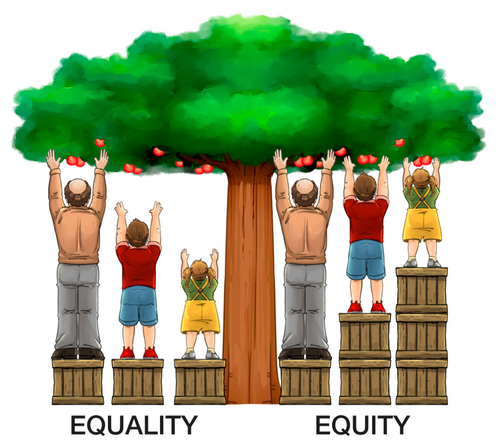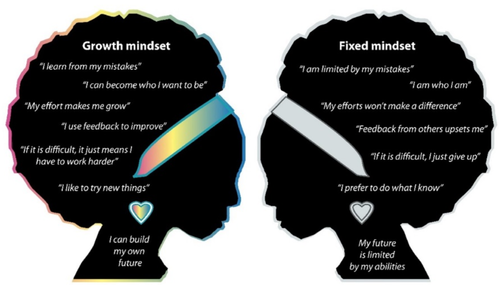Inclusion, diversity and student assessment
Promoting equity
Human diversity encompasses the various ways individuals differ from one another, including physical, cognitive, social, and cultural aspects. The OECD highlights key dimensions of diversity in education, such as gender, ethnicity, migration, special education needs, and giftedness, which can be sources of prejudice and discrimination[1]. Neurodiversity covers the multiple ways in which the brain processes information and interacts with the world, including conditions like ADHD, Autism, Dyslexia, and more. Not all neurodiverse individuals face the same challenges, and some may go unnoticed[2].
Regardless of students’ cognitive abilities, a "threatening" environment leads to serious academic and emotional consequences, impairing students’ performance and learning ability[3]. It is crucial for schools to create inclusive environments where all students feel safe and can reach their full potential. Efforts to address all kinds of diversity issues are increasing globally, emphasizing the importance of non-discrimination and challenging stereotypes. Education should embrace diversity as a fundamental aspect of human nature, recognizing that everyone is unique and valuable. Encouraging students to freely express themselves in schools is vital, as embracing differences can ignite innovative solutions to societal challenges. Therefore, it is essential to provide support to teachers in implementing inclusive and equitable teaching methods that accommodate diverse learning styles.

Equity in education focuses on providing all students with equal opportunities to reach their full potential, regardless of their differences. It involves creating inclusive educational systems that foster personal growth and a sense of belonging[1]. Embracing equity means deconstructing the idea of a standard norm and adapting teaching and assessment methods to meet the diverse needs of each student[4]. Teachers play a crucial role in understanding and accommodating the diversity in their classrooms, offering various tools for learning and expression. By shifting towards a mindset of diversity and equity, teachers can create a safe and inclusive environment where students can thrive. This approach involves considering alternative forms of assessment and teaching methods to ensure all students can succeed and learn in their own unique way.
Student assessment in the 21st century
The traditional school system, known as the "factory model," was developed during the industrial revolution to prepare students for specific jobs. However, with the evolving world and vast online resources, predicting future jobs has become challenging. To adapt, education needs to focus on developing skills like critical thinking, creativity, collaboration, problem-solving, and more. SoundScapes emphasizes the importance of these skills for student success in various domains such as social, emotional, cognitive, and ethical. Thus, it promotes the ASSESS project innovate assessment framework and methodology[5], inspired in Universal Design for Learn and Design Thinking in Education, and aimed at fostering student empowerment through personalized assessment design, diverse engagement opportunities, varied assessment methods, flexible learning tools, safe expression spaces, growth mindset promotion, individualized teaching approaches, and goal-oriented fluidity.

ASSESS proposes a structured approach to conducting formative and summative assessments using checklists and rubrics. The process begins with defining learning goals and selecting skills to assess, followed by the creation of checklists and rubrics to fit the unique context and student diversity. Involving students in the preparation process is encouraged to gather their input on learning goals and assessment criteria. Teachers then share the finalized checklists and rubrics with students before starting the assessment process. The suggested sequence for student assessment includes regularly collecting evidence using checklists, assessing student development with rubrics multiple times during a learning period, generating a summative assessment based on them and a final report and grade.
However, beyond merely using the tools, it is crucial to maintain ongoing observation, communication, and feedback with students. Teachers must remain attuned to their students' progress and recognize the impact of their feedback. Because SoundScapes advocates for a project-based design thinking approach to STEAM education, emphasizing competence development, inclusion, and diversity. We strongly encourage teachers to explore the ASSESS framework and adopt it for their assessment methodology.

References
- ↑ 1.0 1.1 Cerna, L., et al. (2021), "Promoting inclusive education for diverse societies: A conceptual framework", OECD Education Working Papers, No. 260, OECD Publishing, Paris.
- ↑ Absoud, M., Wake, H., Ziriat, M., & Hassiotis, A. (2019). Managing challenging behaviour in children with possible learning disability. BMJ, 365.
- ↑ Taylor, V. J., & Walton, G. M. (2011). Stereotype threat undermines academic learning. Personality and social psychology bulletin, 37(8), 1055-1067.
- ↑ Inclusive Assessment - Equity, Diversity and Inclusion (2022, march 9th). Oxford Brooks University. https://www.brookes.ac.uk/staff/human-resources/equality-diversity-and-inclusion/guides-to-support-inclusive-teaching-and-learning/inclusive-assessment/
- ↑ Doran, P. (2023) Student Assessment in the 21st Century. ISBN: 978-989-35384-0-1